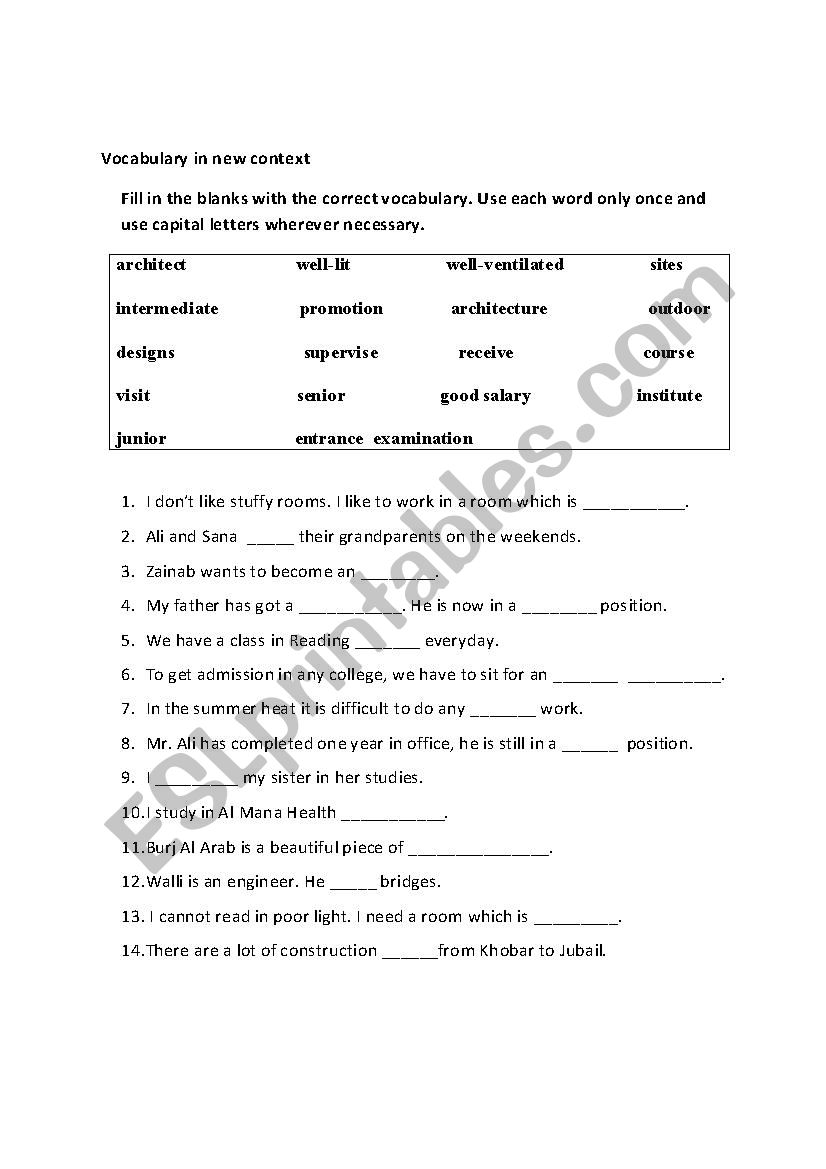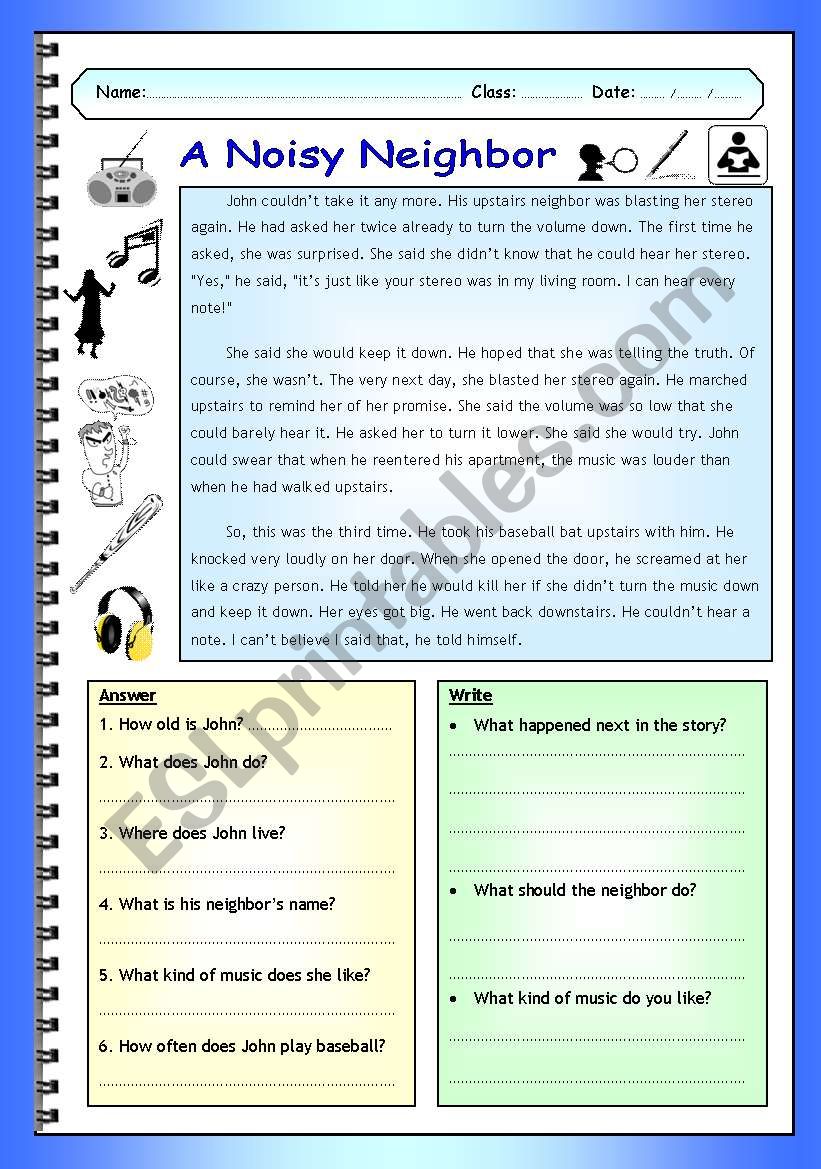
Unlocking Fluency: The Indispensable Role of Pre-intermediate ESL Worksheets
For English as a Second Language (ESL) learners navigating the transition from basic proficiency to more advanced communication, the pre-intermediate level represents a crucial bridge. At this stage, learners possess foundational knowledge but require structured, targeted practice to solidify their understanding and expand their linguistic repertoire. This is precisely where Pre-intermediate ESL worksheets prove invaluable. They serve as a fundamental resource for both educators and self-directed learners, offering a systematic approach to mastering the complexities of the English language at a pivotal stage of development.
The pre-intermediate level, often corresponding to CEFR B1, marks a significant leap from the basic survival English of A1 and A2. Learners at this stage are expected to understand the main points of clear standard input on familiar matters regularly encountered in work, school, leisure, etc. They can deal with most situations likely to arise whilst travelling in an area where English is spoken. They can produce simple connected text on topics which are familiar or of personal interest, and describe experiences and events, dreams, hopes and ambitions, and briefly give reasons and explanations for opinions and plans. While they can communicate, their fluency may be hesitant, their vocabulary limited, and their grammatical structures sometimes inaccurate. This is where the targeted practice offered by well-designed Pre-intermediate ESL worksheets becomes indispensable.
Why Worksheets Are Crucial at the Pre-intermediate Level

Worksheets, often seen as supplementary materials, are in fact a cornerstone of effective language acquisition at the pre-intermediate stage for several compelling reasons:

- Reinforcement and Consolidation: Learners at this level are introduced to a wider array of grammatical structures (e.g., various past tenses, conditionals, passive voice, reported speech) and a significantly larger vocabulary. Worksheets provide the necessary repetition and structured practice to move these concepts from short-term memory to long-term retention.
- Targeted Skill Development: Worksheets allow for the isolation and focused practice of specific language skills – whether it’s a particular grammar point, a new set of vocabulary, reading comprehension strategies, or writing mechanics. This targeted approach ensures that specific weaknesses can be addressed systematically.
- Self-Paced Learning and Autonomy: For self-study, worksheets empower learners to progress at their own pace, reviewing challenging topics as needed and building confidence. With answer keys, they offer immediate feedback, fostering a sense of achievement and encouraging independent learning.
- Varied Learning Styles: Worksheets can cater to different learning styles. Visual learners benefit from clear layouts and diagrams, while kinesthetic learners can engage through writing and completing tasks. Auditory learners can benefit when worksheets are integrated with listening exercises.
- Assessment and Progress Tracking: Teachers can use worksheets to gauge student understanding and identify areas that require further instruction. For learners, completing worksheets can provide a tangible measure of their progress and highlight areas where more effort is needed.



Key Areas Covered by Effective Pre-intermediate ESL Worksheets

Well-rounded Pre-intermediate ESL worksheets cover a comprehensive array of language skills, ensuring a balanced development of proficiency:
1. Grammar Worksheets

At the pre-intermediate level, grammar becomes more intricate. Worksheets focus on:
- Past Simple vs. Present Perfect: Differentiating usage and form.
- Future Forms: Will, be going to, present continuous for future.
- Conditionals (Type 1 & 2): Real and unreal hypothetical situations.
- Passive Voice: Understanding and forming passive sentences.
- Reported Speech: Changing direct speech to indirect speech.
- Modal Verbs: Advanced uses of modals for possibility, obligation, advice, etc.
- Relative Clauses: Defining and non-defining.
- Connectors and Discourse Markers: Using linking words (e.g., however, therefore, in addition) for coherence.
- Gerunds and Infinitives: When to use which verb form after certain verbs or prepositions.
- Worksheet types: Gap-filling, sentence transformation, error correction, multiple choice, matching sentence halves.


2. Vocabulary Worksheets
Expanding vocabulary is crucial for expressing more complex ideas. Worksheets often focus on:
- Topic-Based Vocabulary: Travel, work, education, health, environment, technology, current events.
- Collocations: Common word pairings (e.g., make a decision, take a break).
- Phrasal Verbs: Understanding and using multi-word verbs.
- Idioms and Common Expressions: Introducing frequently used idiomatic language.
- Word Families: Nouns, verbs, adjectives, adverbs derived from a base word.
- Worksheet types: Matching words to definitions, completing sentences with appropriate vocabulary, categorizing words, creating mind maps, crossword puzzles, word searches.
3. Reading Comprehension Worksheets
Pre-intermediate learners should be able to understand short, authentic texts. Worksheets train them to:
- Identify Main Ideas and Supporting Details: Skimming and scanning for information.
- Infer Meaning from Context: Understanding unknown words or phrases based on the surrounding text.
- Understand Text Structure: Recognizing how different parts of a text are organized.
- Interpret Feelings and Opinions: Reading between the lines.
- Text types: Short articles, blog posts, emails, advertisements, news headlines, simple stories.
- Worksheet types: True/false statements, multiple-choice questions, answering open-ended questions, summarizing sections, ordering events.
4. Listening Comprehension Worksheets
Developing listening skills involves understanding spoken English in various contexts. Worksheets guide learners to:
- Listen for Specific Information: Extracting key details (names, dates, numbers).
- Understand Main Points: Grasping the overall message of a short conversation or monologue.
- Identify Speaker’s Purpose or Opinion: Recognizing tone and intent.
- Take Notes: Practicing efficient note-taking strategies.
- Audio types: Short dialogues, announcements, short news reports, simple interviews, voicemails.
- Worksheet types: Filling in missing words in a transcript, answering comprehension questions, identifying speakers, matching audio segments to images or descriptions.
5. Writing Practice Worksheets
Worksheets provide structured practice for developing clearer and more coherent written English:
- Sentence Construction: Building complex sentences using conjunctions and relative clauses.
- Paragraph Writing: Understanding topic sentences, supporting details, and concluding sentences.
- Email Writing: Formal and informal email structures.
- Short Essays/Opinions: Expressing opinions with reasons and examples.
- Summarizing: Condensing information from a text or audio.
- Worksheet types: Reordering sentences to form a coherent paragraph, writing short responses to prompts, guided writing tasks (e.g., "Write an email to a friend about your holiday"), sentence combining exercises.
6. Speaking Prompt Worksheets
While speaking requires interaction, worksheets can provide excellent preparation:
- Discussion Questions: Prompts for pair or group discussions.
- Role-Play Scenarios: Scripts or outlines for practicing real-life conversations (e.g., ordering food, asking for directions, making a complaint).
- Picture Description: Prompts to describe images using target vocabulary and grammar.
- Worksheet types: Lists of questions, scenario cards, vocabulary prompts for a given topic.
Characteristics of Effective Pre-intermediate ESL Worksheets
Not all worksheets are created equal. High-quality Pre-intermediate ESL worksheets share several key characteristics:
- Clear Instructions: Unambiguous and easy-to-understand instructions are paramount, especially for learners still developing their reading comprehension.
- Appropriate Challenge Level: Worksheets should be challenging enough to promote learning but not so difficult as to cause frustration. They should align with the specific grammar and vocabulary targets for the pre-intermediate level.
- Variety of Task Types: Mixing different exercise formats (gap-fill, matching, multiple choice, open-ended questions, true/false) keeps learners engaged and caters to diverse learning preferences.
- Relevance and Authenticity: Content should be relatable to real-life situations and interests, making the learning more meaningful. Using authentic or semi-authentic texts and dialogues is highly beneficial.
- Engaging Content: Visually appealing layouts, relevant images, and interesting topics can significantly boost motivation.
- Focus on Communicative Outcomes: While drilling grammar is necessary, the ultimate goal is communication. Worksheets should ideally lead to opportunities for learners to use the practiced language in speaking or writing.
- Answer Keys: For self-correction and independent learning, comprehensive answer keys are essential.
How to Use Pre-intermediate ESL Worksheets Effectively
The versatility of Pre-intermediate ESL worksheets makes them adaptable to various pedagogical approaches:
- In the Classroom:
- Individual Practice: For quiet work and personal consolidation.
- Pair Work: Encourages collaboration and peer teaching, as students discuss answers.
- Group Work: Ideal for more complex tasks or discussion prompts, fostering communicative practice.
- Diagnostic Tools: To assess prior knowledge or identify learning gaps before introducing a new topic.
- Review and Reinforcement: After a lesson, to practice newly introduced concepts.
- For Homework: To extend learning beyond the classroom and encourage independent study.
- For Self-Study: Learners can use them to supplement their main course materials, focus on areas they find challenging, or simply get extra practice.
- As Assessment Tools: Short quizzes or tests to evaluate understanding of specific topics.
- Integration with Other Activities: A worksheet on reported speech could be followed by a speaking activity where students report what their classmates said. A reading comprehension worksheet could lead to a debate.
Where to Find Quality Pre-intermediate ESL Worksheets
The digital age has made a wealth of resources available:
- Dedicated ESL Websites: Many websites (e.g., ESL-Lounge, British Council LearnEnglish, ThoughtCo, Breaking News English) offer free or subscription-based worksheets categorized by level and skill.
- Textbook Companion Resources: Many ESL textbooks come with accompanying workbooks or online resources that provide supplementary worksheets.
- Teacher-Created Materials: Experienced teachers often share their own well-honed worksheets on educational platforms or blogs.
- AI Tools (with caution): AI language models can generate worksheets, but these should always be thoroughly reviewed by a human for accuracy, appropriateness, and natural language.
Challenges and Considerations
While invaluable, relying solely on Pre-intermediate ESL worksheets can have limitations:
- Over-reliance on Mechanical Drills: Too much focus on fill-in-the-blank exercises without communicative follow-up can lead to a lack of genuine language production.
- Lack of Authenticity: Some worksheets might use contrived language that doesn’t reflect real-world usage. Teachers should strive to select or adapt materials that are as authentic as possible.
- Catering to Diverse Learning Styles: While worksheets offer variety, they might not fully address all learning preferences, particularly those who thrive in highly interactive or kinesthetic environments. They should be part of a broader pedagogical approach.
- Need for Feedback: While answer keys help, personalized feedback from a teacher on more open-ended tasks (like writing) is crucial for growth.
In conclusion, Pre-intermediate ESL worksheets are far more than just busywork; they are essential tools for bridging the gap between basic English proficiency and confident communication. By providing structured, targeted, and repeatable practice, they empower learners to solidify their grammatical foundation, expand their vocabulary, and refine their reading, listening, and writing skills. For educators, they offer a versatile resource for reinforcement, assessment, and differentiation. By thoughtfully integrating them into their learning journey, pre-intermediate students can build a robust foundation, preparing them for the complexities of advanced English and ultimately, achieving true fluency.
